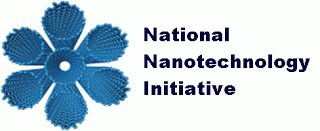History of Nanotechnology
The concept of Nanotechnology has been around since the 4th Century! Starting with the Romans, nanostructured materials have been used for a long time but were not officially given a name till Norio Taniguchi, in 1974, suggested the term "Nanotechnology". Nanotechnology industry started developing at an amazing speed in the 20th century. Explore the timeline below to learn about the discoveries and advancements made in the fast growing field of Nanotechnology! (5)
4th Century


The Lycurgus Cup from Rome is a great example of how nanostructured materials were used such a long time ago. The Lycurgus Cup contains dichroic glass that gives it unique properties to change color based on the angle of light. The cup appears green when light shines from the outside and appears red when lit from the inside because it contains colloidal gold and silver. (1)
1857


Michael Faraday studied gold at the nanoscale level and also discovered that colloidal "ruby" gold (nanostructured gold) produced different colored outcomes under certain lighing conditions. He then published "Experimental relations of gold (and other metals) to light" in 1857. (9)
1974

“Congress enacted the 21st Century Nanotechnology Research and Development Act (P.L. 108-153). The act provided a statutory foundation for the NNI, established programs, assigned agency responsibilities, authorized funding levels, and promoted research to address key issues.” (1)
2003
2007
“Angela Belcher and colleagues at MIT built a lithium-ion battery with a common type of virus that is nonharmful to humans, using a low-cost and environmentally benign process. The batteries have the same energy capacity and power performance as state-of-the-art rechargeable batteries being considered to power plug-in hybrid cars". (1)

The U.S. government planned to fund about $2 billion in research for Nanotechnology after recognizing it’s benefits and importance. (4)
2012
A team of researchers at Stanford University in California build a computer using nanotubes, material that can generate electronic devices using less energy and with greater speed than silicon chips. (5)
2013


13th -18th Centuries

(Image 5)

(Image 4)

(Image 5)
The blades of the Damascus Saber contained carbon nanotubes and nanoscale wires, which provided support and flexibility to the edge and blade. The Damascus Saber was made by the "great 17th Century nanotechnologist Assad Ullah". (1, 8)

Richard Feynman of the California Institute of Technology gave the first lecture on engineering at the atomic scale called, “There’s Plenty of Room at the Bottom”. He talked about aspects of research and brought out the idea of manipulating atoms without directly calling it Nanotechnology. He also proposed that everything could be done on a small scale without reduction of clarity and efficiency. (1, 2)
1959
1990s
The first Nanotechnology companies began to develop. (4)
1999-2000

First products of Nanotechnology begin to appear. Examples include automobile bumpers that resisted denting and scratching, antibacterial socks, wireless electric tools, stain-resistant clothing, and better display functions for cameras, televisions etc. The National Nanotechnology Initiative is launched in order to negotiate Federal R&D Efforts and encourage development of applications in the field of Nanotechnology. (1, 4)
2004
Britain’s Royal Society and the Royal Academy of Engineering published “Nanoscience and Nanotechnologies: Opportunities and Uncertainties”. This highlighted the potential to include “health, environmental, social, ethical, and regulatory issues” related to Nanotechnology. The first college-level program in Nanotechnology is established at the College of Nanoscale Science and Engineering. (1,7)

(Image 12)
2009-10
DNA-like robotic nanostructured devices were invented by Nadrian Seeman and colleagues at New York University.
The International Business Machines Corporation created a “complete nanoscale 3D relief map of the word one-one-thousandth the size of a grain of salt”, opening prospects for nanomedicine. (1)

2014
An Israeli team injects nanobots into cockroaches to perform specific functions to treat disease. The DNA nanobots were able to successfully target cells, demonstrating their ability to strike cancer cells as well.
A team from MIT and CalTech recognizes the method to use nanotubes for plants. The insertion of nanotubes into chloroplasts increased plant growth and photosynthesis, creating “super plants” (6)


